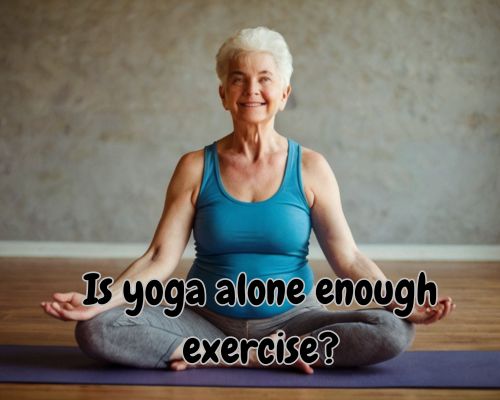If you’re looking for a form of exercise that benefits both your physical and mental health, yoga is a great option.
Yoga has been shown to improve flexibility, balance, strength, and overall physical fitness. It also has mental health benefits, such as reducing stress, anxiety, and depression.
However, the question remains: is yoga alone enough exercise? Let us know more with Jane Benson of Yoga Mornington.

While yoga can be a great workout, it may not provide enough cardiovascular exercise or calorie burn for those looking to lose weight or improve their overall fitness.
It’s important to consider your fitness goals and whether yoga alone can help you achieve them.
Understanding Yoga as a Holistic Exercise
Yoga is a holistic exercise that has been practiced for thousands of years.
It is a mind-body practice that involves physical postures, breathing techniques, and meditation.
With Yoga Mornington, we will explore the fundamentals of yoga practice, the physical benefits of yoga, yoga and cardiovascular health, and the mental and emotional health advantages of yoga.
The Fundamentals of Yoga Practice
Yoga is typically practiced on a mat and involves a series of postures, known as asanas.
There are many different styles of yoga, including Hatha, Vinyasa, Iyengar, Ashtanga, and Yin yoga. Each style has its own unique characteristics and benefits.
One of the most common sequences in yoga is the Sun Salutations or Surya Namaskar. This sequence is a great way to warm up the body and prepare for other postures.
Physical Benefits of Yoga
Yoga is an excellent way to improve your physical health.
It can help you improve your flexibility, balance, and strength. Regular yoga practice can also help you improve your muscle tone, body composition, and mobility.
Additionally, yoga can help you improve your posture and reduce the risk of injury.
Yoga and Cardiovascular Health
While yoga is not typically thought of as a cardiovascular exercise, it can still be beneficial for your heart health.
Some styles of yoga, such as Vinyasa and Ashtanga, can be quite vigorous and raise your heart rate.
Additionally, yoga can help improve your cardiorespiratory fitness, which is important for overall health.
Mental and Emotional Health Advantages
Yoga is not just a physical practice, it is also a mental and emotional practice.
Regular yoga practice can help you reduce stress and anxiety, improve your mood, and promote relaxation.
Additionally, yoga can help you develop a greater sense of self-awareness and mindfulness.
Complementing Yoga with Other Exercises
If you practice yoga regularly, you may wonder if it’s enough to keep you fit and healthy.
While yoga offers numerous benefits, including improved flexibility, balance, and mental clarity, it’s not a complete workout on its own.
Complementing your yoga practice with other exercises can help you achieve overall fitness and health.
The Role of High-Intensity and Cardio Workouts
High-intensity workouts and cardio exercises, such as running, can be great additions to your yoga practice.
These types of exercises can help improve your cardiovascular health, strengthen your heart, and increase endurance.
They can also help you burn calories and lose weight, which can reduce your risk of heart disease, diabetes, and other health problems.
Strength Training and Muscle Conditioning
Incorporating strength training and muscle conditioning exercises into your routine can help you build muscular strength and endurance.
This can improve your overall physical fitness and help prevent injuries.
Weight lifting, resistance training, and bodyweight exercises are all great options for building muscle and increasing strength.
Incorporating Variety for Overall Fitness
Adding variety to your exercise routine can help prevent boredom and keep you motivated. It can also help you achieve overall fitness by targeting different muscle groups and energy systems.
Consider incorporating different types of exercises, such as yoga, running, and strength training. You can also include other activities like swimming, cycling, or team sports to keep your workouts interesting and challenging.
Remember, the key to achieving overall health and fitness is to find a balance that works for you. By complementing your yoga practice with other exercises, you can create a well-rounded fitness routine that meets your exercise needs and helps you achieve your fitness goals.